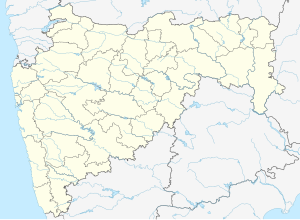The Marathas, under the leadership of Peshwa Madhavrao and his uncle Raghunathrao, defended a campaign of the Nizam's forces and eventually defeated them in the Battle of Uruli. This victory helped the Marathas regain their control over the Deccan region and weakened the power and influence of the Nizam.[citation needed]
| Battle of Uruli | |||||||
|---|---|---|---|---|---|---|---|
| Part of Maratha-Nizam War | |||||||
| |||||||
| Belligerents | |||||||
|
|
| ||||||
| Commanders and leaders | |||||||
|
|
| ||||||
| Strength | |||||||
| 80,000 | Unknown | ||||||
| Casualties and losses | |||||||
| Unknown |
800 dead 1,000 wounded[3] | ||||||
Uruli Kanchan Battle field Location | |||||||
Battle
editIn December, Nizam Ali approached Poona, causing people to flee to hill forts for safety. Valuables were sent to Purandhar, believed to be a secure location from Muslim looters. Meanwhile, skirmishes occurred between the Marathas and Nizam Ali's troops, with the Maratha artillery causing significant damage. Gopal Rao Patwardhan oversaw these operations. Suspecting hidden treasure at Sindhia's residence in Srigonda, Nizam Ali moved his camp there and ordered a thorough search. Korde's forces followed, leading to a decisive battle in January 1762. The Maratha army, numbering around 80,000 soldiers, outnumbered Nizam Ali's army. Raghunath Rao led the attack on his left, while the Peshwa and Sangramrao Korde fired on his right. Near the end of the battle, the Marathas chased Nizam Ali's troops from behind. Nizam Ali suffered around 800 casualties and over 1,000 injuries in the battle.[4]
See also
editReferences
edit- ^ Chopra, Pran Nath; Ravindran, T. K.; Subrahmanian, N. (1979). Modern period. S. Chand.
- ^ Mehta, Jaswant Lal (1 January 2005). Advanced Study in the History of Modern India 1707-1813. Sterling Publishers Pvt. Ltd. ISBN 978-1-932705-54-6.
- ^ Banerjee, Anil Chandra. "Peshwa Madhav Rao 1" – via Internet Archive.
- ^ Banerjee, Anil Chandra (1943). Peshwa Madhav Rao 1.
